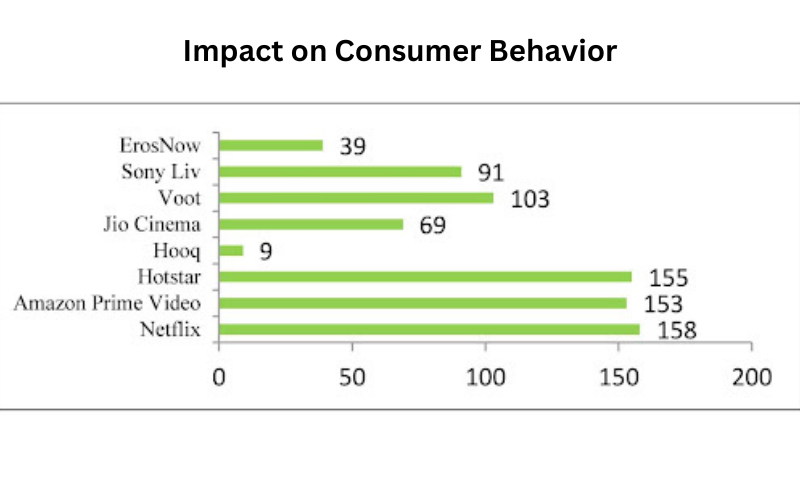The advent of streaming services has revolutionized the entertainment landscape, transforming how audiences consume television and movies. Platforms like Netflix, Disney+, Amazon Prime Video, and Hulu have disrupted traditional media consumption patterns, offering unprecedented convenience, variety, and customization. This article explores the profound influence of streaming services on the TV and movie industries, examining the changes they have brought about in content creation, distribution, and consumption.
The Rise of Streaming Services
Early Beginnings
The origins of streaming can be traced back to the early 2000s, with services like YouTube providing a platform for video content. However, it was Netflix, initially a DVD rental service, that pioneered the subscription-based streaming model in 2007. This marked a significant shift in how audiences accessed media, moving from physical rentals and scheduled broadcasts to on-demand viewing.

Proliferation and Competition
The success of Netflix spurred the emergence of numerous competitors. Amazon Prime Video, launched in 2011, provided a robust alternative with its integration into the Amazon Prime ecosystem. Hulu, established in 2007, offered a hybrid model with both on-demand and live TV options. More recently, Disney+ launched in 2019, capitalizing on Disney’s extensive library of beloved content. The entry of major players like Apple TV+ and HBO Max further intensified the competition, each bringing unique offerings to the market.
Transforming Content Creation
Original Programming
One of the most significant impacts of streaming services is their emphasis on original programming. Netflix set the trend with acclaimed series like “House of Cards” and “Stranger Things,” demonstrating the potential of in-house productions. This shift has encouraged other platforms to invest heavily in original content, leading to a boom in high-quality TV series and films. Disney+, for instance, leverages its Marvel, Star Wars, and Pixar franchises to create exclusive content that attracts a massive subscriber base.
Creative Freedom
Streaming services often provide creators with greater creative freedom compared to traditional networks. The absence of rigid time slots and fewer content restrictions allow for more experimental and diverse storytelling. Shows like “The Crown” and “The Mandalorian” benefit from larger budgets and creative autonomy, resulting in higher production values and unique narratives that might not fit conventional TV formats.
Global Reach and Diverse Voices
The global reach of streaming platforms has facilitated the production and distribution of content from diverse cultural backgrounds. Netflix’s international hits like “Money Heist” and “Squid Game” have garnered worldwide acclaim, highlighting the universal appeal of well-crafted stories. This has opened doors for creators from various regions to showcase their work on a global stage, promoting cultural exchange and inclusivity in media.
Changing Distribution Models

On-Demand Viewing
The primary appeal of streaming services is their on-demand nature. Viewers can access a vast library of content at their convenience, eliminating the need to adhere to broadcast schedules. This shift has empowered audiences to curate their own viewing experiences, leading to the rise of binge-watching. Entire seasons of TV shows are often released simultaneously, allowing viewers to consume content at their own pace.
Cord-Cutting Trend
The convenience and affordability of streaming services have contributed to the cord-cutting trend, where consumers cancel traditional cable or satellite TV subscriptions in favor of streaming options. According to a report by eMarketer, the number of cord-cutters in the United States surpassed 50 million in 2021, a clear indication of the shifting preferences towards streaming platforms. This trend has forced traditional TV networks to adapt by launching their own streaming services, such as NBC’s Peacock and CBS All Access (rebranded as Paramount+).
Hybrid Release Strategies
The COVID-19 pandemic accelerated changes in distribution models, with many studios opting for hybrid release strategies. The simultaneous release of films in theaters and on streaming platforms became common, as seen with Warner Bros.’s decision to release its 2021 slate on HBO Max alongside theatrical releases. This approach caters to both traditional moviegoers and those who prefer the convenience of home viewing, potentially reshaping the future of film distribution.
Impact on Consumer Behavior

Personalized Recommendations
Streaming services utilize sophisticated algorithms to analyze viewer preferences and provide personalized content recommendations. This level of customization enhances user engagement by suggesting shows and movies that align with individual tastes. Netflix’s recommendation engine, for example, uses data-driven insights to curate content for each subscriber, increasing viewer satisfaction and retention.
Decline of Appointment Viewing
The flexibility offered by streaming services has led to the decline of appointment viewing, where audiences tuned in at specific times for their favorite shows. Instead, viewers now watch content at their own pace, contributing to the rise of binge-watching. This shift has altered how networks approach content release schedules, with many opting to release entire seasons at once to cater to binge-watchers.
Social Media Integration
The integration of streaming with social media has also influenced consumer behavior. Viewers often discuss and share their favorite shows and movies on platforms like Twitter, Instagram, and TikTok, creating a sense of community and driving word-of-mouth promotion. Streaming services leverage this trend by encouraging social media engagement, with features like Netflix’s “Watch Party” allowing users to watch and chat about content simultaneously.
Challenges and Future Directions

Content Saturation
The proliferation of streaming services has led to content saturation, with an overwhelming amount of shows and movies available to viewers. While this abundance provides variety, it can also make it challenging for consumers to discover new content. Streaming platforms must continuously innovate their recommendation algorithms and user interfaces to help viewers navigate this vast landscape.
Subscription Fatigue

As more streaming services enter the market, consumers face the challenge of managing multiple subscriptions. The cost of subscribing to several platforms can add up, leading to subscription fatigue. To address this, some companies are exploring bundling options or offering ad-supported tiers to provide more affordable choices for consumers.
Competition and Consolidation
The competitive nature of the streaming market may lead to further consolidation. Companies may merge or acquire smaller players to strengthen their content libraries and market presence. Disney’s acquisition of 21st Century Fox and WarnerMedia’s merger with Discovery are examples of this trend. Such consolidation can impact the diversity of available content and shape the future landscape of streaming.
Technological Innovations
Technological advancements will continue to shape the future of streaming services. Improved internet speeds, 5G connectivity, and advancements in AI and machine learning will enhance the quality and accessibility of streaming content. Virtual reality (VR) and augmented reality (AR) technologies may also play a role in creating immersive viewing experiences, adding another dimension to how audiences consume media.
Global Expansion
Streaming services are increasingly focusing on global expansion to tap into new markets. Netflix, for instance, has invested in producing local content in countries like India, South Korea, and Brazil to cater to regional audiences. This globalization strategy not only broadens subscriber bases but also enriches the content library with diverse stories from around the world.
Conclusion

Streaming services have undeniably transformed the TV and movie industries, reshaping how content is created, distributed, and consumed. Platforms like Netflix and Disney+ have introduced new paradigms of convenience, personalization, and creative freedom, attracting millions of subscribers worldwide. As the industry continues to evolve, streaming services will likely play an even more significant role in defining the future of entertainment. While challenges such as content saturation and subscription fatigue persist, the innovative spirit driving these platforms promises to keep audiences engaged and entertained for years to come.

